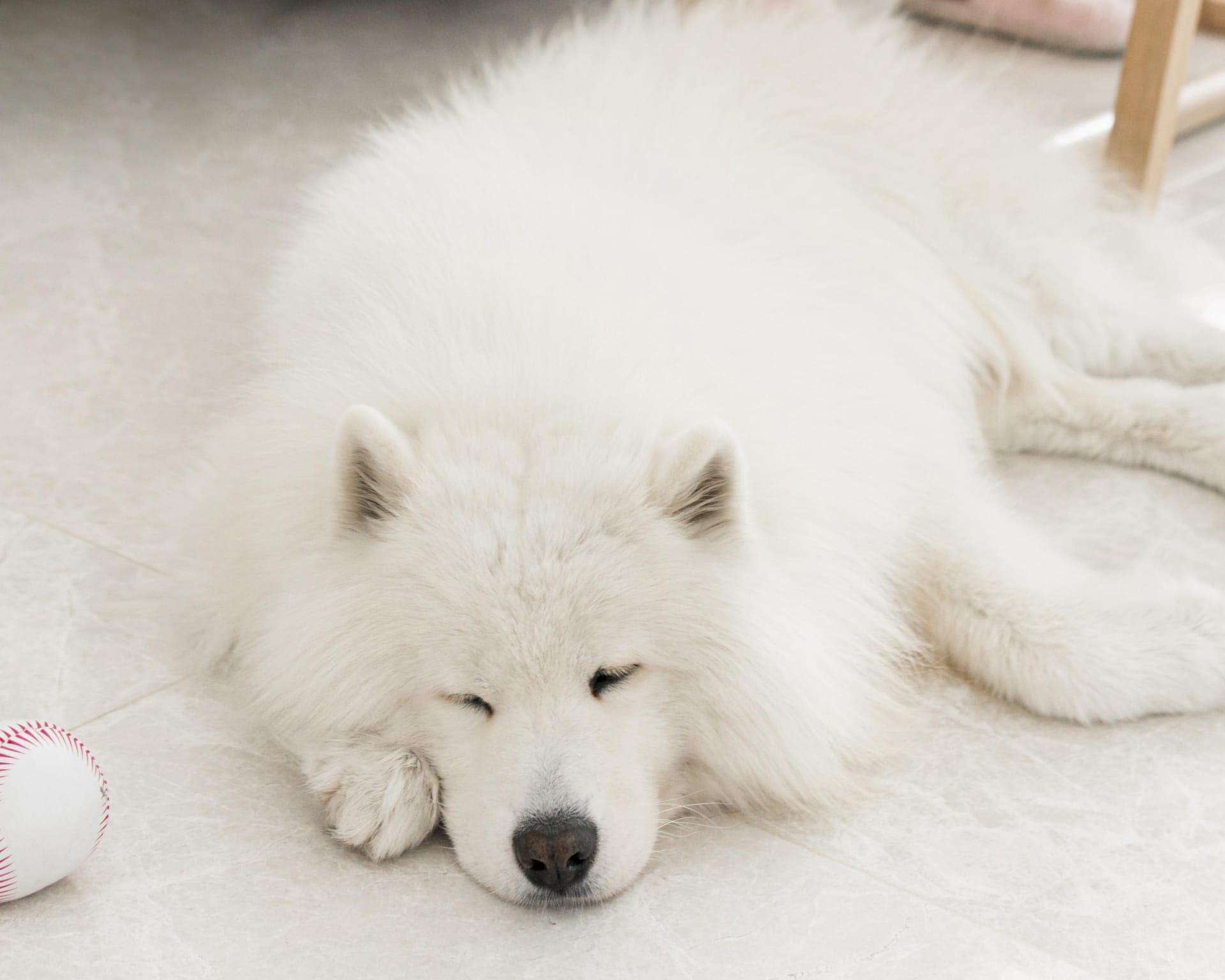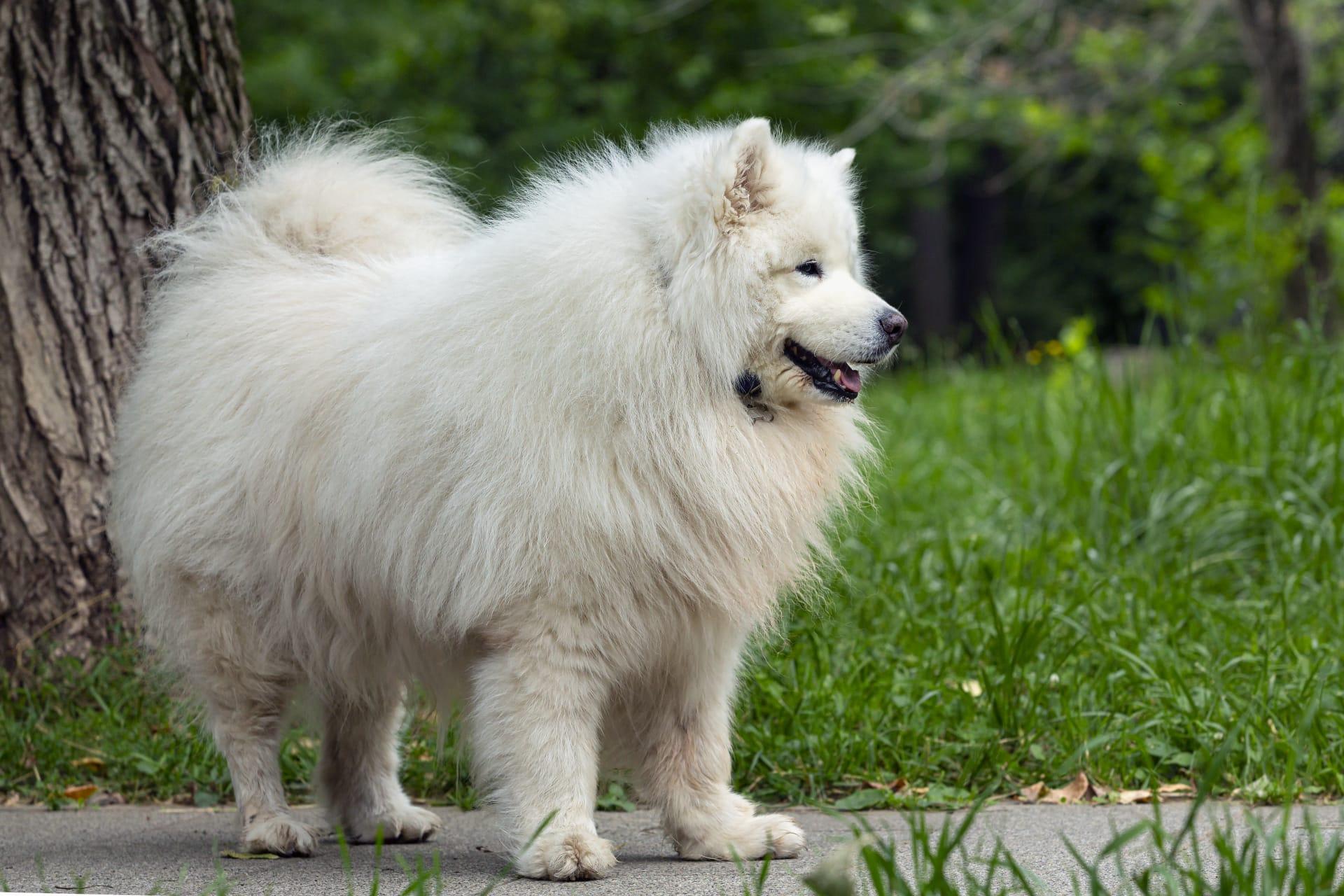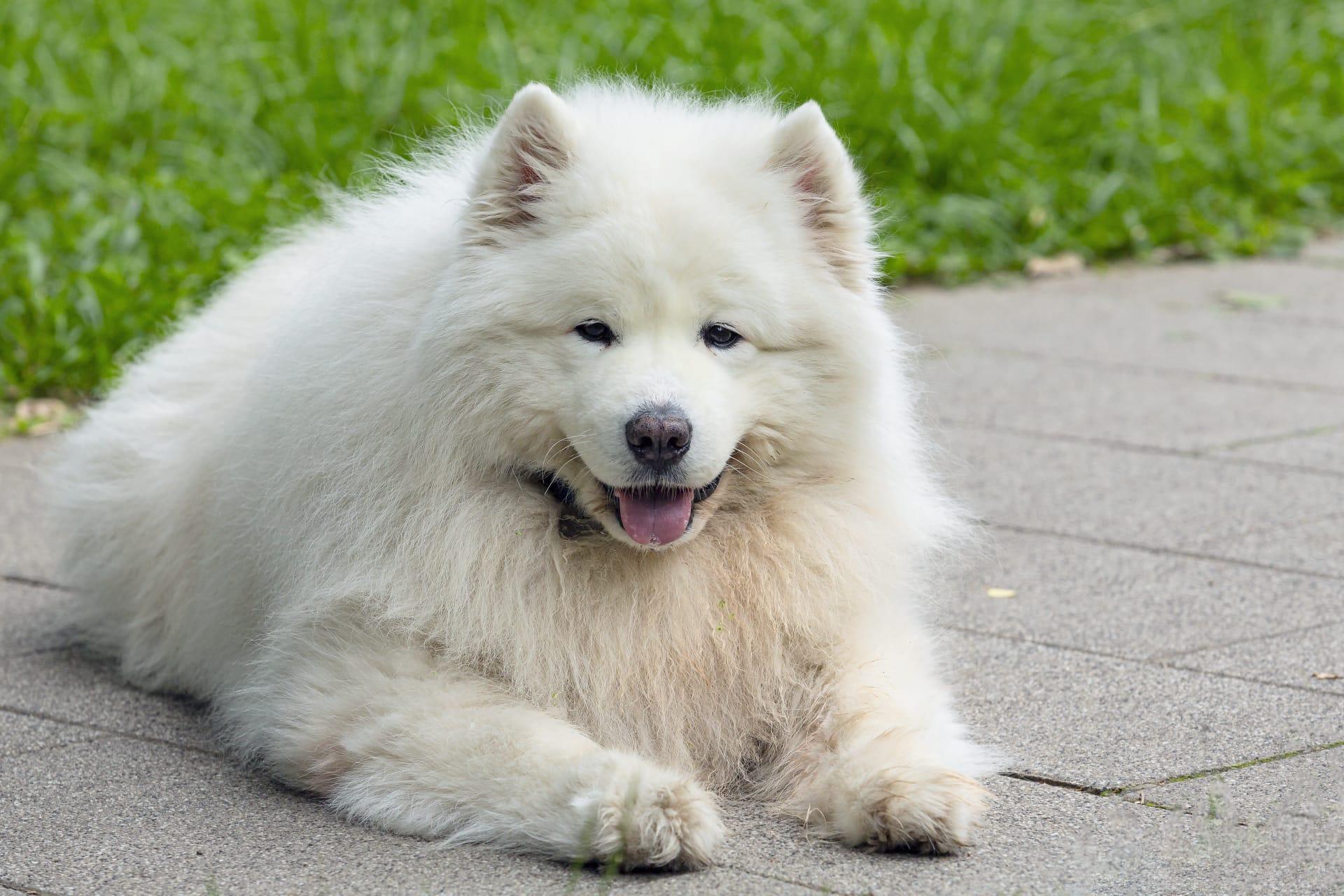Samoyed
- Home /
- Mini Encyclopedia /
- Animal /
- Samoyed
1
The Samoyed belongs to the genus Canis, a classification that includes domestic dogs, wolves, and other similar animals. Within this genus, the Samoyed is recognized for its distinctive fluffy white coat, smiling face, and gentle demeanor. This breed is part of the Spitz family, a group of dogs characterized by their pointed ears, double-layered coats, and bushy tails that curl over their backs. The Samoyed specifically is categorized under the working dog group due to its history and abilities in herding, pulling sleds, and other tasks that require strength and endurance.
The Samoyed's distribution is global, but its origins can be traced back to Siberia, where it was bred by the Samoyedic peoples to herd reindeer and pull sleds across the frozen tundra. Today, these dogs are found in many countries around the world, thriving in various climates despite their Arctic roots. They are particularly popular in the United States, Canada, and Northern Europe. Adaptability to different environments, coupled with their friendly nature, has made them beloved pets in households far from their original cold habitats.

2
Question: Is it true that Samoyeds are suited only for cold climates due to their thick fur?
Answer: While it's a common misconception that Samoyeds can only thrive in cold weather because of their dense, fluffy coats, they are surprisingly adaptable to warmer climates as well. Their double-layer coat not only keeps them warm in winter but also helps insulate against heat in the summer. Proper care, such as providing shade, fresh water, and air conditioning indoors, can ensure a Samoyed stays comfortable even in warmer weather. However, it's important to monitor them for signs of overheating and to limit their exposure to high temperatures.

3
The Samoyed has a long-standing relationship with humans that dates back thousands of years. Originally bred by the nomadic Samoyedic people in Siberia, these dogs were integral to the survival of their human companions, serving as sled dogs, herders, and warm companions during the harsh Arctic winters. Their friendly and sociable nature made them excellent members of the family, often sleeping with their owners to provide warmth.
Today, the Samoyed's role has shifted from working dog to companion animal, but their inherent traits of loyalty, gentleness, and a friendly disposition continue to make them cherished pets. They are known for their tendency to form strong bonds with their owners and are particularly good with children, making them a popular choice for families. The Samoyed's smiling expression, often referred to as the "Sammy smile," reflects their amiable and positive temperament, further cementing their status as affectionate family members.

4
The origin of the Samoyed breed dates back to the regions of Siberia, where they were bred by the Samoyedic peoples. These indigenous groups relied on the dogs for a variety of tasks that were crucial for survival in the Arctic environment, such as herding reindeer, hunting, and pulling sleds. The breed's name itself originates from these people, highlighting the deep connection between the Samoyeds and their human companions.
Over time, the Samoyed has evolved from a versatile working dog to a popular companion animal. Their physical characteristics, such as their thick white coat, sturdy build, and enduring stamina, have been refined through selective breeding. This evolution was influenced by their introduction to other parts of the world in the late 19th and early 20th centuries, where they began to gain popularity as show dogs and pets. Despite these changes, the Samoyed has retained its friendly nature, intelligence, and ability to work, making it a beloved breed worldwide.

5
Film: A notable documentary featuring the Samoyed is "Snow Dogs of the North," produced in Canada in 2018. This film explores the historical and contemporary roles of Samoyed dogs in Arctic and sub-Arctic regions, showcasing their incredible adaptability, intelligence, and enduring bond with humans. The documentary highlights their contributions to polar expeditions and their transformation into beloved family pets.
Book: "The Samoyed: A Comprehensive Guide to Owning and Caring for Your Dog," published in the United States in 2015 by author Diane Morgan, offers an in-depth look at the breed's history, characteristics, and needs. Morgan provides practical advice on training, grooming, health care, and the unique challenges of living with a Samoyed, making it an essential resource for current and prospective owners.
Book: Another significant work is "Samoyeds: From Siberia with Love" by Elizabeth Jane, published in the United Kingdom in 2017. This book delves into the fascinating journey of the Samoyed from its origins with the nomadic Samoyedic people to its status as a cherished pet and show dog around the world. Jane combines historical insights with practical care tips, enriched by personal anecdotes and scientific research, to present a comprehensive portrait of the breed.